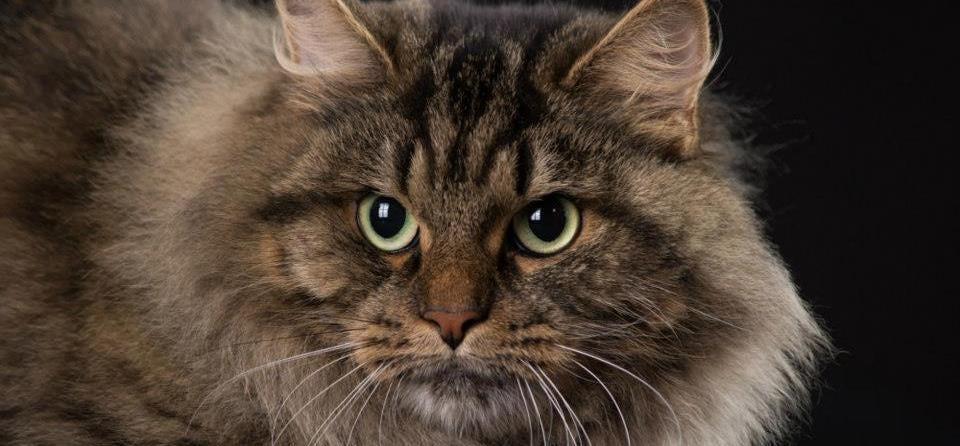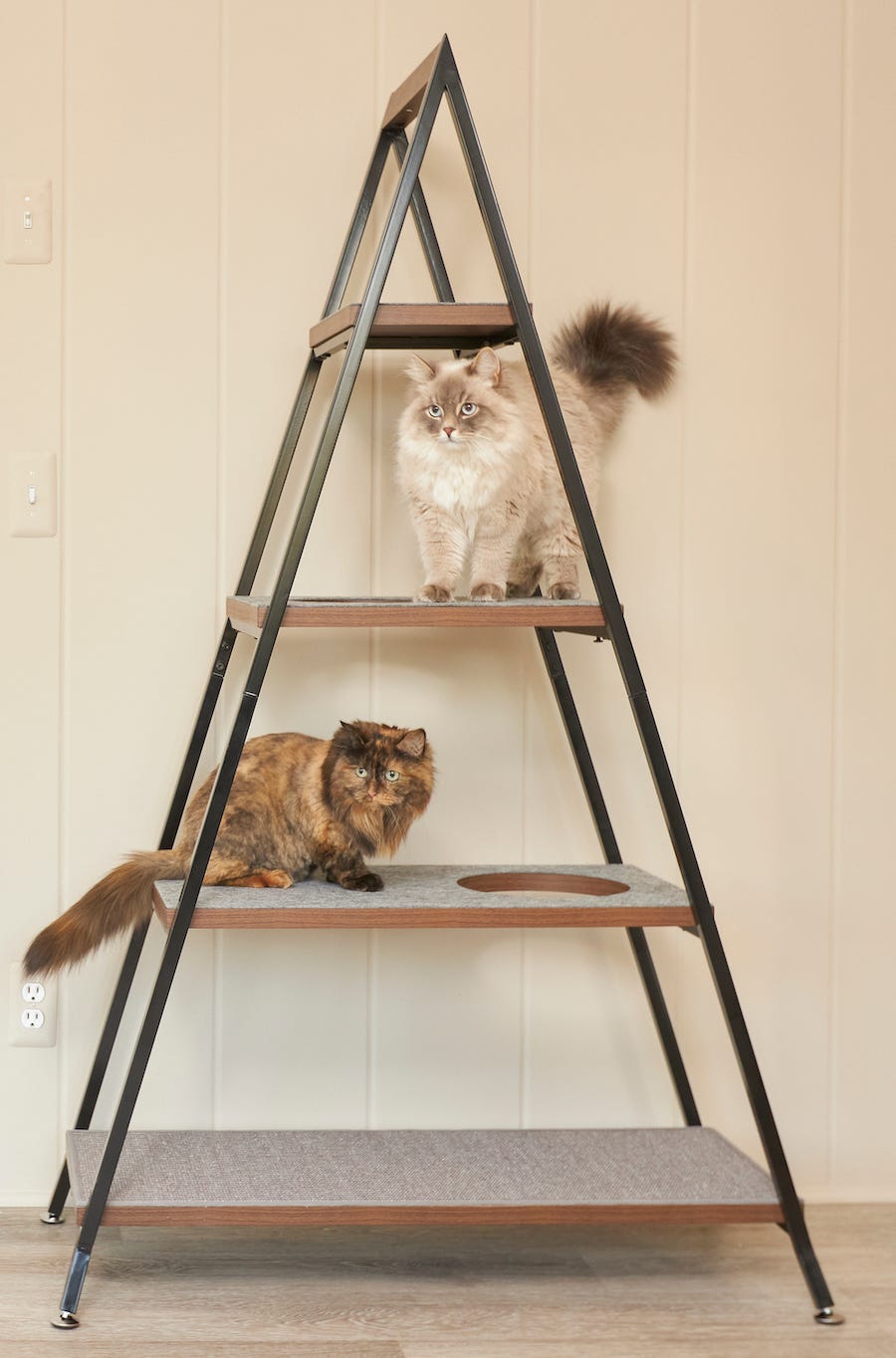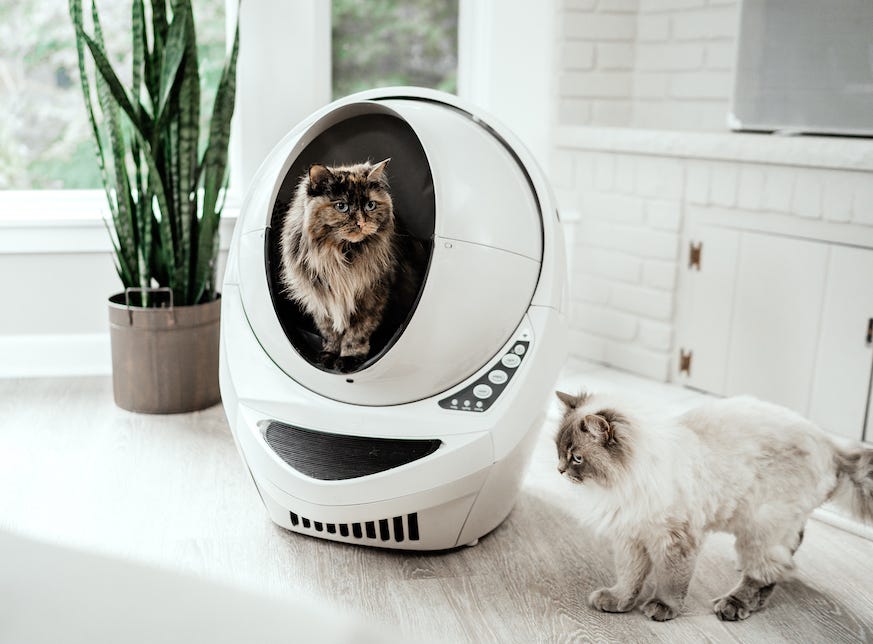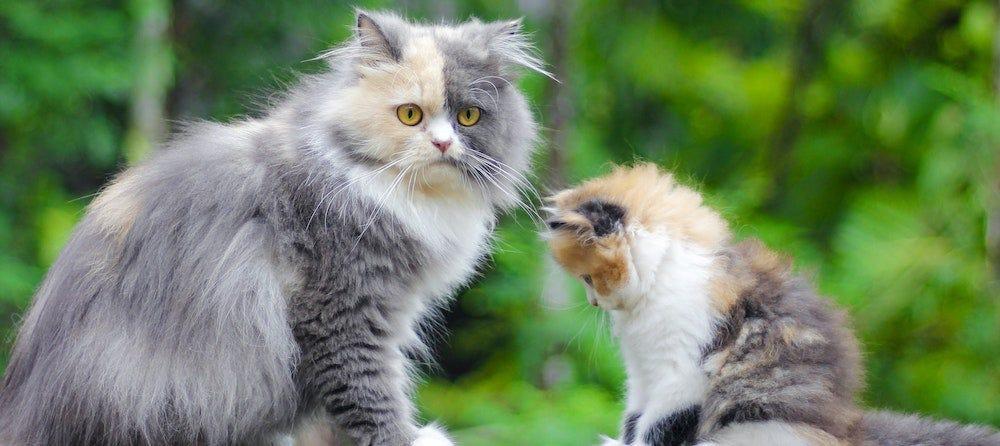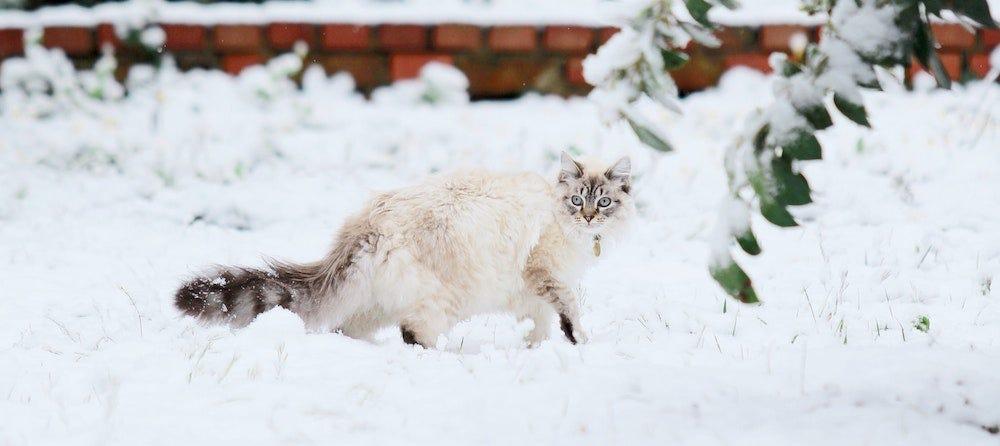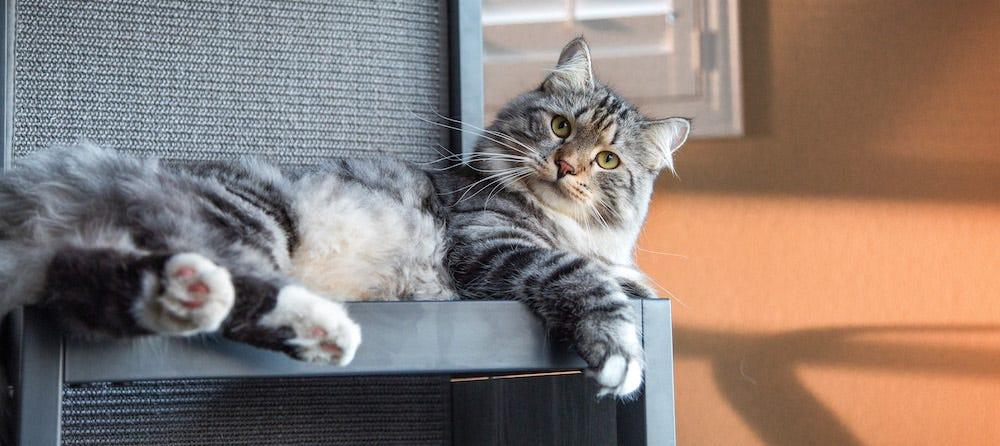When you think of Siberia, you probably imagine harsh winters and lots of snow. (And you would be accurate!) Now imagine what kind of cat would be able to survive in that climate—not only survive, but thrive.
That feline would be none other than the Siberian cat! (Officially called the Siberian Forest cat.)
This breed of cat is native to the forests in Russia. They are bred to survive and have endured hundreds, if not thousands, of years in the harsh winters of Siberia. They are strong and independent cats with thick triple-coated fur that keeps them toasty in the cold.
Looking at a Siberian breed is just as breathtaking as the frozen tundras of Asia. Despite their fortitude in the face of Mother Nature, these felines are as sweet as a cup of hot cocoa on a winter’s day.
| Siberian cat | ...at a glance |
|---|---|
| Personality | Affectionate, playful, intelligent |
| Life expectancy | 10-18 years |
| Weight | 10-20 lbs |
| Coat & colors | Long, triple coat; various colors & patterns |
| Energy level | High |
| Affection level | High |
| Friendliness | High |
| Shedding level | Medium |
| Required grooming | Medium |
Overview of the Siberian cat
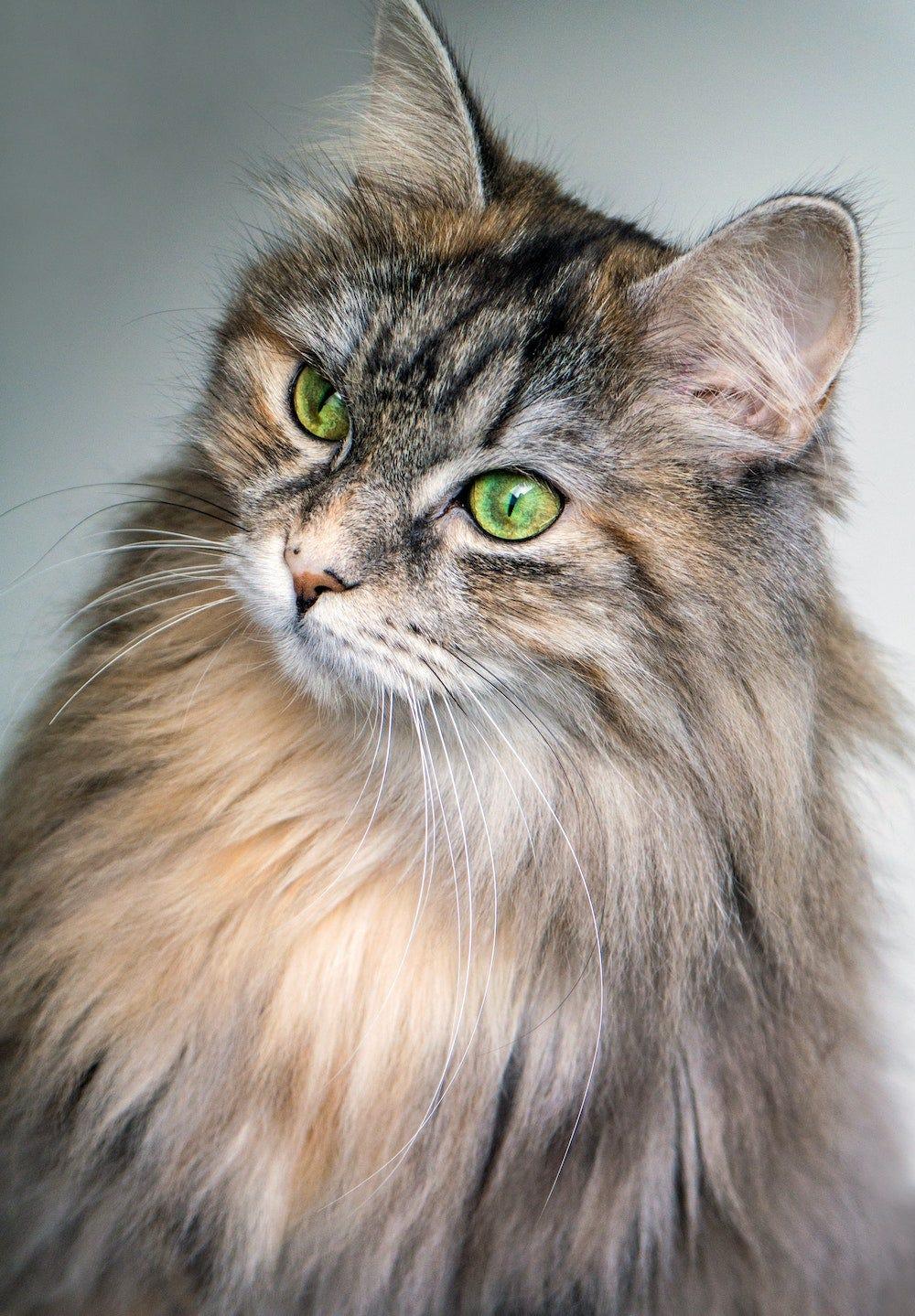
The Siberian cat is classified as a medium-sized cat breed with semi-long hair, medium-sized hind legs, and a tail the size of their body. These cats have mastered the art of adaptation, thriving in all kinds of environments.
Weight
Siberian cats are medium in size, but they have dense, thick coats that might add a pound and give them a barrel-shaped look. These big-boned cats typically weigh between 10 and 20 pounds, with females on the smaller side. Siberian cats are very active and playful; weight should not become an issue if they maintain a good diet and exercise routine.
Length
The Siberian cat ranges from 15 to 25 inches in length. Their tails are usually the same length as their bodies. The length of their tail aids in balance, especially when climbing or navigating narrow spaces. This cat also has a uniquely long neck, accenting their graceful presence, elegant stature, and incredible agility.
Coat
Siberians have magnificent coats and entrancing round eyes. Without their thick coats, they wouldn’t have been able to survive a thousand years of Russian winters.
Their coat not only features thick and water-resistant cat fur, it’s also composed of three layers called a triple coat: There’s an outer coat made of guard hairs, a middle layer consisting of awn hairs, and a soft undercoat.
Despite their thick, triple-layered coat, Siberian cats do not shed excessively compared to other long-haired breeds. In warmer weather, the Siberian cat will shed most of their undercoat layers for a more comfortable summer coat. During the colder months, their winter coat will be extremely full. Luckily, their grooming needs are not incredibly intensive. Light, regular groomings will suit your cat just fine and help prevent matting and hairballs.
The Siberian cat’s coat can come in any color or pattern, with or without white markings. The white Siberian cat is most likely to have blue eyes.
Every Siberian you come across will be different from the next, and the versatility of their coats adds to their allure.
Lifespan
Taking proper care of your Siberian cat can result in a long, happy life. These cats can live up to 18 years—with a healthy diet and exercise, it’s likely you’ll have a friend for years to come. If you want to better understand your Siberian cat's age in relation to human years, check out our article on cat age in human years.
The Siberian cat’s history
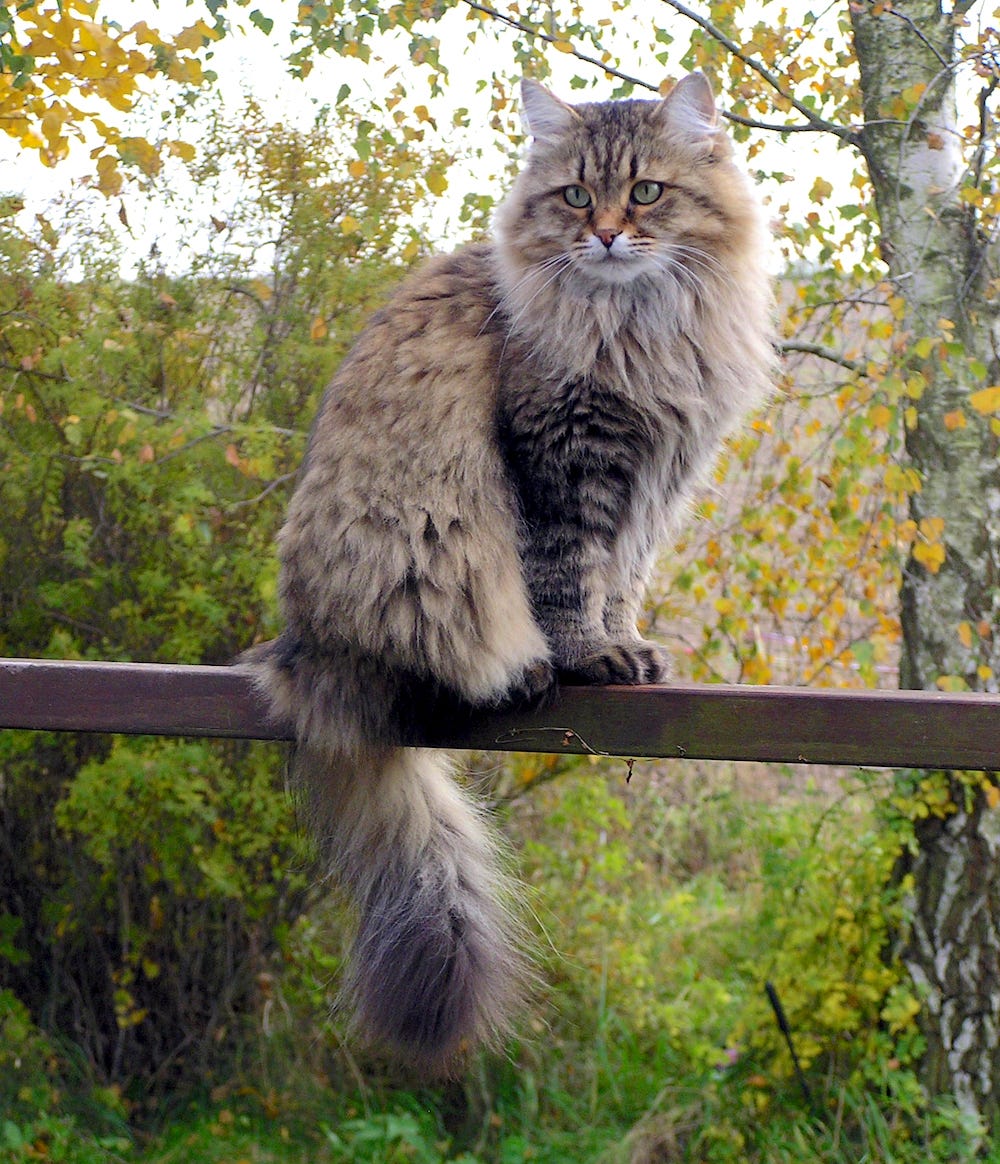
Siberian cats have been documented for at least a thousand years in the forests of Russia. They are cherished and honored, with a long history as helpful hunters and stars of Russian fairy tales.
There are plenty of Russian stories that depict the Siberian cat as a magical and majestic forest creature, giving them a sort of mysticism similar to that of the Norwegian Forest cat.
Russian Longhair cats have existed for a long time, but it wasn’t until Russians were exiled to Siberia that these specific domestic cats really established themselves. They were brought along with their human companions and adapted to endure harsher climates.
It’s thought that the mutation for longhaired cats started in Russia, where the cats made their way south to Turkey to create the Angora cat and then to Persia to create the Persian cat. If this is the case, the Siberian cat breed is one of the oldest cats to exist—perhaps the oldest longhaired cat ever! Some suspect they are related to the Norwegian Forest cat.
Stories from Russia tell of the Siberian cat weighing up to 45 pounds, protecting their families as would a guard dog. Famous English cat show organizer Harrison Weir described the Siberian cat in a book called "Our Cats and All About Them," which was published in 1889.
It wasn’t until the 1990s, 100 years later, that the Siberian cat had successfully made its way over to the United States. Cat breeder Elizabeth Terrell was the one to bring this breed to the U.S., inducting us all into the Siberian-loving cat club.
Average price range for Siberian cats
The Siberian cat is a unique creature of beauty, resilience, and charm, all of which come at a price. These cats are a treasure in the feline world, and their price reflects their rarity and the meticulous care breeders put into maintaining their pure lineage. On average, a purebred Siberian kitten from a reputable breeder can range anywhere from $1,000 to $2,000.
Such a cost can be attributed to several factors:
- A breeder's reputation plays a significant role in the pricing, as they work to maintain the pedigree of their purebred cats.
- The color and age can also influence the coat as younger cats with more unique colors or patterns may command a higher price due to their rarity.
- The hypoallergenic nature of Siberian cats makes it a highly sought-after breed, as this unique trait can be a lifeline for cat lovers with allergies.
Remember, having a Siberian cat isn't just about the initial purchase price. Consider the long-term costs such as high-quality food, regular vet check-ups, grooming, and potential health issues.
Characteristics and cuddles
The Siberian cat is slow to mature. It takes roughly 5 years for a Siberian cat to fully grow into adult cats. They are resilient and strong cats that are known for their very sweet expressions and a playful activity level. While they may have been protectors in their past lives, these cats make fantastic family pets and sidekicks.
Siberian cats are muscular and powerful, yet they're also very agile and can move around easily without knocking things over.
Personality and behavior
The Siberian is a great family cat to have around. They are watchers and surveyors of their space that get along swimmingly with other animals and children, but also willingly play the role of lap cat.
These cats have years of real-world experience embedded in them, making them highly intelligent and good at problem-solving. They like to chase and hunt, and can even learn to fetch.
Siberian cats are deeply people-oriented and want to spend time following their family members around. They will chirp and trill at you when they want your attention, meet you at the door when you come home, and curl up on your lap when they need cuddles.
The Siberian cat is known to have a fascination with water. They might swat at water coming from a faucet, jump into a shower that has water droplets still in the tub, or drop their toys in the sink while you are doing dishes. This will help you when it comes to bath time. Siberians are less likely to put up a fight while participating in the grooming process, making the whole situation a lot less stressful.
Caring for a Siberian cat
This breed is very active and requires a lot of play. They are highly intelligent and may need more stimulation than other cats. They may get into trouble if they are bored—for example, if they want to get into the closed cabinet, it’s likely they will figure out a way to get in.
You’ll want to have toys and cat trees around your house for your Siberian to enjoy. If you aren’t able to be around your Siberian all day, provide toys to allow them to entertain themselves. Siberians like to climb, jump, and explore, so having plenty of spaces and levels for your cat to work with can add to the stimulation.
During the summer months, you should expect your Siberian to shed the majority of their fur. When they are actively shedding in the summer, you will need to groom them more often to avoid hairballs.
Keeping your cat's litter box clean is a must. If you want your cat to have the best litter box experience, you should try Litter-Robot. This is a self-cleaning litter box that provides your cat with a clean bed of litter every time they need to use the bathroom.
Is the Siberian cat hypoallergenic?
Many people with cat allergies say they can live alongside the Siberian kitty with no issues. People with allergies to cats are sensitive to the protein Fel d 1, which is found in cats’ saliva, urine, and dander.
Siberian cats just so happen to produce less Fel d 1 than other cat breeds. Ultimately, there is no such thing as a 100% hypoallergenic cat. While the Siberian may elicit less of an allergic reaction than other cats, it’s best to be sure that allergies won’t pose an issue before bringing a Siberian kitten or cat into the home.
Health issues
The Siberian is a relatively healthy cat that can live a long time when properly taken care of. Like other larger cats, the Siberian is more prone to developing hypertrophic cardiomyopathy. Hypertrophic cardiomyopathy (HCM) is when the heart muscles thicken, disrupting blood flow to the heart.
In addition to HCM, Siberian cats may also be prone to obesity due to their bigger size and a general love for food. Regular exercise and a balanced diet are crucial for maintaining their weight. Dental disease is another potential issue that pet parents need to keep a close eye on. As your Siberian cat ages, they may also encounter kidney issues or arthritis.
To keep your cat in the best of health, you should be taking them for annual check-ups at the veterinarian. This way, you can monitor any changes that might have occurred and be on top of their health.
Caring for your fur baby means paying attention to their daily habits in case there is ever an abrupt change. Catching health problems like heart disease early can help give your feline friend the best chance at a good prognosis. Remember, your Siberian cat is a long-term companion, and their health should always be a priority.
Adopting a Siberian cat
If you adopt a Siberian cat, you have a loyal companion for life. This feline is compassionate and loving. They want to follow you around and be a part of every second of your day.
They are dependent on you for love and affection, but in return, they will dote on every member of your family (and visiting guests!). With a Siberian cat, you can anticipate entertainment and enjoyment every day.
Sources:
- Allergic to Your Pet? Learn about Dog and Cat Allergies | Asthma and Allergy Foundation of America
- Hypertrophic Cardiomyopathy | Cornell University College of Veterinary Medicine
- Climate in Siberia, Russia | USA Today
- The Stunning Siberian Cat | The Purrington Post
Photo credits:
- © Sibirela / CC-BY-SA-3.0
- Mona Magnussen via Unsplash
- © Roswitha Budde / CC-BY-SA-3.0
